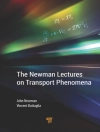
This monograph proves that any finite random number sequence is represented by the multiplicative congruential (MC) way. It also shows that an MC random number generator (d, z) formed by the modulus d and the multiplier z should be selected by new regular simplex criteria to give random numbers an excellent disguise of independence. The new criteria prove further that excellent subgenerators (d1, z1) and (d2, z2) with coprime odd submoduli d1 and d2 form an excellent combined generator (d = d1d2, z) with high probability by Sunzi’s theorem of the 5th-6th centuries (China), contrasting the fact that such combinations could never be found with MC subgenerators selected in the 20th-century criteria. Further, a combined MC generator (d = d1d2, z) of new criteria readily realizes periods of 252 or larger, requiring only fast double-precision arithmetic by powerful Sunzi’s theorem. We also obtain MC random numbers distributed on spatial lattices, say two-dimensional 4000 by 4000 lattices which may be tori, with little pair correlations of random numbers across the nearest neighbors. Thus, we evade the problems raised by Ferrenberg, Landau, and Wong.











